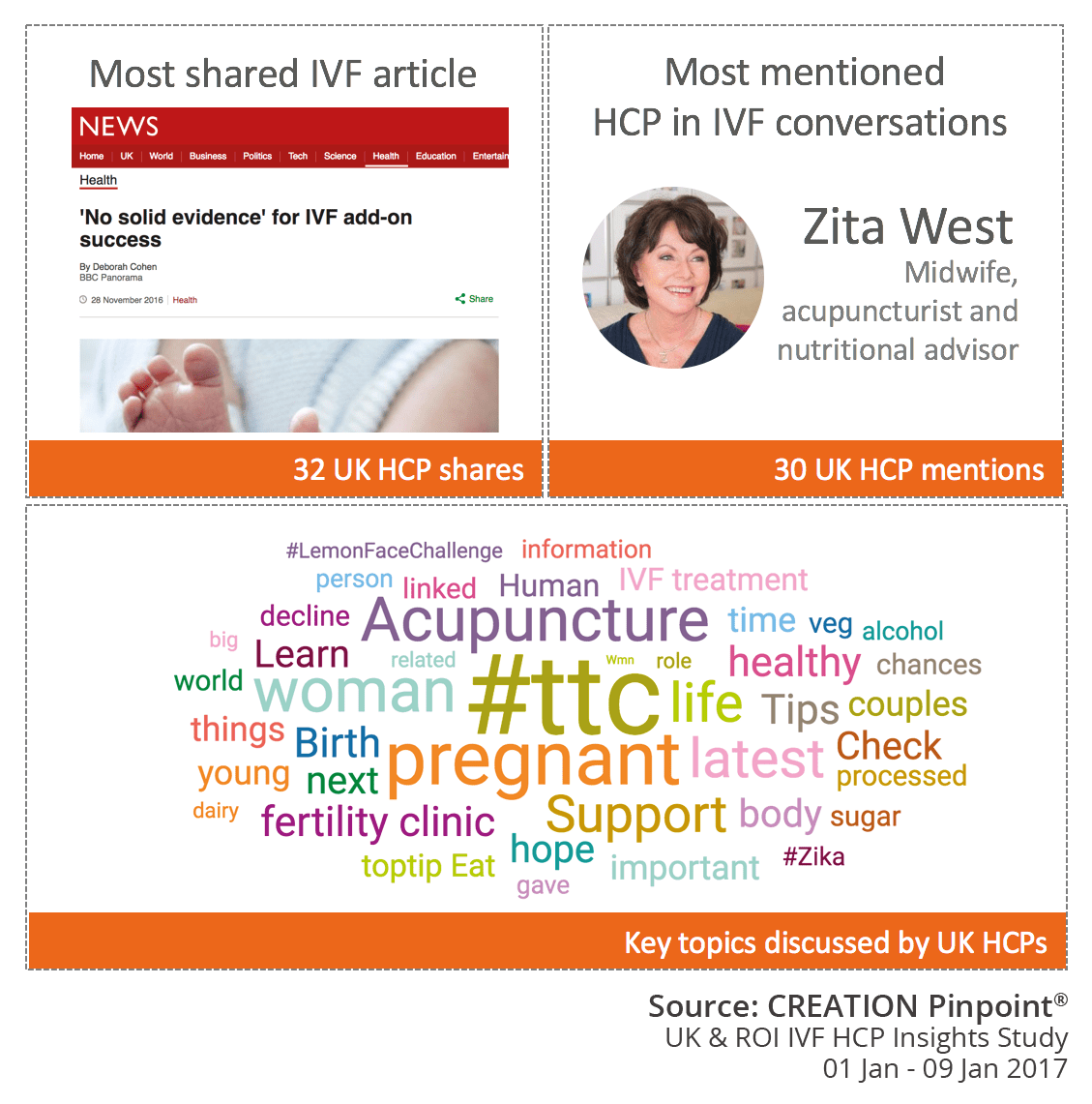Some years ago I spoke with an emergency medic who had twenty five years’ experience as a practising doctor. He told me how public social media channels had allowed him to develop an international, collaborative network of peers. Using public social media channels including Twitter was a natural choice for his network of healthcare professionals because, he told me, pharmaceutical companies would never bombard them with messaging in the way he had experienced inside closed doctors’ networks.
This may be a challenging lesson for those who still invest heavily in advertising targeted at doctors inside closed networks. The emergency medic’s prediction was correct, of course – in most markets, pharmaceutical companies cannot simply advertise products to doctors using public channels, and the very public international reach of Twitter makes it a platform that many pharmaceutical compliance professionals feel a little uncomfortable about.
Yet perhaps the very nature of public social media for doctors and other HCPs, and the challenging questions it inspires among those tasked with compliance, are precisely where the opportunity lies for the pharmaceutical marketer.
Who is influencing the digital healthcare professional?
Research into healthcare professionals’ online behaviours show that when sharing ideas with each other on public social media channels, they are as likely to reference mainstream news media as academic journals. In fact, in a recent study of UK healthcare professionals discussing the topic of IVF on social media, the most-shared article in all their online conversation was a story published by the BBC about IVF add-on success.
The same study revealed that among 1,500 healthcare professionals discussing IVF in the UK were senior experts who might be considered traditional ‘Key Opinion Leaders’. One such example is Geeta Nargund, Lead Consultant in Reproductive Medicine and a Consultant Gynaecologist at St George’s hospital NHS Trust, whose accolades include being President of the International Scientific Society for Mild Approaches in Assisted Reproduction (ISMAAR) and Founder and Medical Director of fertility clinic CREATE. Over recent years Ms Nargund’s social media channels of choice have included Google+, LinkedIn, and her own blog, but these days she is most active on Twitter, where she has more than 900 followers and actively shares advice and engages on policy and education.
The professional who was most mentioned by peers in the fertility conversation, however was Zita West, midwife, acupuncturist, author and founder of her own holistic clinic, who has been described by The Telegraph as “the fairy godmother of fertility”. Ms West’s Twitter profile, which is followed by more than 4,000, is a stream of nutritional and health advice on fertility, interspersed with promotion of her clinic’s webinars and blog posts.

Other influencers in the study included a wide range of healthcare professionals united by a common interest in fertility: nurses, midwives, gynaecologists and public health experts. On social media, it seems, the exchange of ideas among diverse healthcare professional roles at different levels of seniority is the norm. It is not unusual to find junior doctors and even medical students exchanging ideas with senior experts. One senior doctor told me that on social media he feels comfortable learning from nurses and those in junior roles, whereas in the hospital where he practices, this would be highly unlikely to happen.
In another case, a junior doctor who ran a blog collaborated with a specialist who had decades of medical experience but limited social media know-how. The young doctor’s digital reputation gave online reach to the senior expert’s content, while the expert’s content gave credibility to the junior’s blog.
Getting involved
If social media is changing the way our customers are learning, developing and sharing ideas and influencing each other, then it must also change our customer engagement strategies. This lesson has already been learned by other organisations who engage healthcare professionals, including policymakers and patient groups.
When NICE, the UK policymaker for health spending, rejected Pfizer’s breast cancer drug palbociclib for routine funding on the NHS in February, it tweeted the news and invited comments on the draft guidance. NICE has been actively using Twitter to engage healthcare professionals for some time, and its Tweet was shared by medics in the UK and overseas. It was also shared by a student midwife who tweeted to Pfizer and NICE asking them to work together to provide access to the drug.
Contribute your comments on our draft guidance for breast cancer drug palbociclib. Consultation open until 24 Feb: https://t.co/GdY6JPC7wi pic.twitter.com/xO5H9Yrit5
— NICE (@NICEComms) February 9, 2017
Two days after the student midwife’s Tweet, UK organisation Breast Cancer Now shared its own response to the guidance, also tweeting to Pfizer and NICE and urging them to work together to make the drug available. Breast Cancer Now is followed by almost 40,000, and its Tweet, which it posted twice, was re-tweeted by one hundred people, including healthcare professionals.
Weeks later, following the NICE consultation period, the organisation announced that following communication with Pfizer it had decided to postpone its committee meeting to discuss palbociclib, “…to allow the company to submit an updated evidence package…”.
Ten insights-led customer engagement strategies for pharma
So how can pharmaceutical brands plan for meaningful engagement with healthcare professionals, and learn from the organisations that connect with them online? Here are ten ways I have seen at work:
- Use your customers’ language:
When marketers in one brand team saw how pharmacists talked about its products, they discovered that whilst the messaging they planned was on track, the particular language they were using was likely to alienate its customers. Instead, they used words that they now knew would resonate well to engage healthcare professionals effectively. - Meet customers’ expressed needs:
One pharmaceutical brand discovered that a particular group of healthcare professionals was anxious about how to administer their product, so the brand team immediately responded by providing relevant training and resources. This supported better product uptake at a critical time for the brand. - Develop digital customer advocates:
To prepare the way for future digital collaboration, a pharmaceutical company identified thirty emerging Key Opinion Leaders and taught them how to use social media in their specialist area, using real examples to support the specialists’ professional development. - Improve offline marketing:
Traditional, offline marketing activities can be improved by hearing doctors share their hopes, concerns or questions about their work in a particular therapy area. One pharmaceutical company, for example, is tracking the online response of healthcare professionals to stories in traditional press, in order to gain an instant view of not only the reach of the story, but its customers’ reactions as they happen. - Provide timely patient support:
Listening to the first-hand experiences of healthcare professionals can provide an early-warning system for concerns or needs among patients. For example, during the launch of a new drug, one pharmaceutical company found that doctors raised specific concerns about the product several months before the same issues were heard from patients. Based on this pattern, they were able to prepare for patients’ future needs ahead of time. - Target digital content:
By listening to conversations among healthcare professionals, one pharmaceutical company discovered that doctors were not finding the answers to their questions about the company’s launch product online. This insight led them to refine their digital pharma strategy to target key customer groups more effectively. - Integrate social and CRM data:
Knowing which healthcare professionals are “Digital Opinion Leaders” – those shaping opinions among their peers – can help when developing key customer relationships. One pharmaceutical company, for example, is integrating insights from its customers’ digital activities into its CRM data, improving its understanding of key customers and identifying new potential advocates. - Prepare informed policy response:
By listening to healthcare professionals on social media, one pharmaceutical company was able to measure the immediate response to draft policy guidance that would affect the success of its product. The rapid availability of insights put the company in a strong position to respond based on healthcare professionals’ expressed needs. - Differentiate from competitors:
A new pharmaceutical brand entering a competitive drug class tracked conversations among healthcare professionals about its comparative products in several major global markets. It was then able to develop timely messaging to differentiate its own product as it launched. - Leverage congress meetings:
Learning from HCP conversations before, during and after meetings is helping pharmaceutical brands to do more with their congress investment. For example, one pharmaceutical company is using insights from healthcare professionals on social media to plan its congress activity and schedule relevant meetings addressing the specific needs of individual specialists.
Every brand team’s response to the changing market is unique; some will continue to rely solely on traditional market research techniques and “the way we do things”. Others, led by innovators who are eager to achieve better outcomes for customers, patients and products, are already transforming the way they plan and manage brand strategies.
To better understand how to identify which HCPs are your digital opinion leaders sign up to our free pharma webinar.
This post was originally commissioned for PMLiVE in July 2017The header image was sourced from Flickr user Hamza Butt, under creative commons licence.

 By Daniel Ghinn
By Daniel Ghinn 

